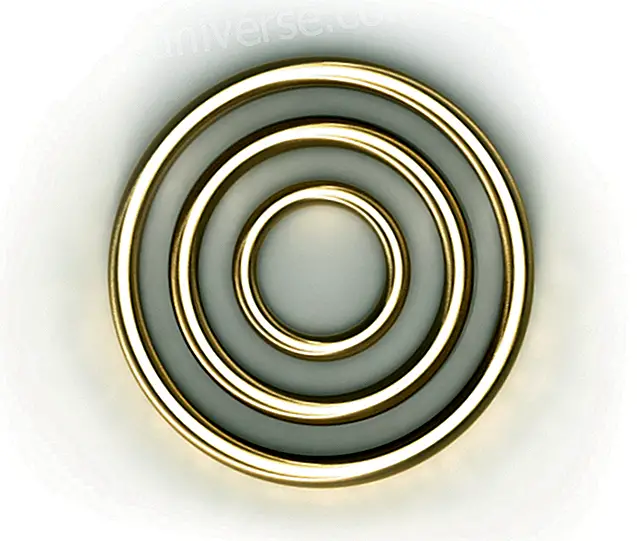HOLISTIC DENTISTRY AND EMOTIONAL DISORDERS….
The term holistic means "global."
In addition to healing your teeth independently, your relationship with the mouth, the rest of the body, emotions, the way of being and how it can affect you in daily behavior is taken care of.
For psychosomatic medicine experts, teeth are the bearers of our vitality, in addition to reflecting how we live daily tensions. With the teeth we chew all the food and perform the first process of digestion in which our ability to bite, crush and shred the nutrients with which we will keep our body in shape is measured. We could say that teeth reflect our way of dealing with our conflicts.
For thousands of years, Orientals, especially the Chinese, found a direct and emotional relationship between different parts of the body. They found energy channels and called them meridians. Each meridian passes through one or more organs, through two or more teeth and connects with different emotions.
For Orientals, dentures are the mechanical system that allows us to digest properly, and thus facilitate a better use of essential principles. In the East, chewing is taken care of by performing up to 100 chews before eating the most solid foods. This habit is a living reflection of the patient and much calmer attitude of the East.
The teeth speak to us, when they are sick, of our undigested or manifested fears and emotions. Life is a school where we come to learn, as the great sages say, we are the Soul, eternal peace and love. But in this learning full of experiences things happen to us that arouse hidden emotions and sometimes, we are not able to process.
That is when our body expresses and speaks to us.
In this image you can see the relationship between emotions and our teeth.

What is holistic dentistry?
Holistic dentistry developed as a result of knowing that certain alterations in the teeth and jaw can cause significant health burdens in other parts of the body.
Therefore, holistic dentistry focuses on interrelationships throughout the body, with dentists, who work holistically, acquiring more knowledge of other medical fields.
Teeth are not simply isolated elements in the mouth. Since everything is connected to each other in the body, it is no surprise that the teeth are closely related to all organs and vice versa. These relationships with the organs are checked every day in practice. Many times it is the teeth, whose roots have been treated, that cause the problems: Although at their tips no focus can be seen on the x-ray, these teeth have an effect on the organs and their functions by energetic pathways, the so-called meridians .
Holistic dentistry includes these interrelations of the teeth with the organism to the treatment. It aims to eliminate alterations in the body, if they originate in the teeth. In addition, it is a very important objective of holistic dentistry to perform all dental treatments in such a way that no more physical burdens are derived from the body. For example, it is done through the elimination of oral batteries or through the use of perfectly compatible biological materials that have previously been tested on the person.
"Oral battery" is the term for the "battery effect" that occurs when there are different metals in the mouth (eg amalgam and gold). Saliva, which is electrically conductive, provides a minimum electrical current that releases ignoble metals (eg mercury from amalgam) in the mouth.
Holistic dentists see the interrelation of the local focus on the tooth or jaw with the effects on the whole body. To manifest this relationship between the foci of the teeth and the jaw, on the one hand, and the alterations in the organs, on the other, extensive tests are made.
Holistic dentistry is based on the fact that all materials placed in the mouth can have long-term effects on the body, in the sense of chronicotoxic, allergic and electrical charges.
Result: never amalgam in the mouth any metal better with implants, because each metal can represent a burden on the body.
Our goal is to improve the health of patients as a whole through dental health.
Devitalized teeth cause a wide variety of diseases.
Although the root canal is filled correctly, in a devitalized tooth there is enough space for the purtrefaction bacteria to break down the rest of the dead organic substance and thus create very toxic products for metabolism such as putrescine, cadaverine, mercaptan and thioether. Substances such as indole, eschatol, tryptophan and free radicals are also produced. The strong effect of all these tomains has been demonstrated.
If laboratory animals receive minimal amounts of thioether per syringe, liver damage occurs, vessels, joints and muscles become inflamed, which results in degeneration. Tomains paralyze the enzyme system as demonstrated by research by professors Haley and Pendergrass of the USA. Professor Haley even reports on a case of death with a woman from his team during the experiments. The lethal dose consisted only of two drops that the woman had absorbed through the skin.
The toxins of the devitalized tooth penetrate the surrounding jaw and from there the intrusion occurs throughout the body by means of blood circulation. It also seems that toxins can move through nerves even to the brain. There they can disturb the internal glands producing hormones and thereby alter the metabolism.
Combinations of tomains and heavy metals, such as mercury, are especially dangerous because toxins are not simply added but intensify each other. It is only a matter of time before the body manages to secrete the toxins or break them down. But one day the body will get tired of having to do it and physical loads will be shown. Many times this origin of diseases will only be found after a long search.
It has been known for a long time that devitalized teeth, although filled correctly, become toxic sources sooner or later and thus can cause the patient's decay. The dentist Weston A. Price of the USA, famous for his research in the 20s and 30s on the causes of degeneration of the jaw and dentures, extracted devitalized teeth to sick people and I implanted them under the skin of rabbits. After three days the rabbits showed the first symptoms of the disease and most of them died from intoxication.
If the dentist manages to fill the root canals extensively with skill and diligence, there is still 40% to 60% of the original soft texture approximately half. Above all it is the dental root canals that are not filled and the many tiny ducts up to 30, 000 per square millimeter in the cross section with a full length of 4 to 5 km. meters. Rotting bacteria colonize dead organic mass in these remaining cavities despite disinfection and produce very toxic products for metabolism.
That is why a devitalized tooth with an amalgam filling as a closure is a source of constant toxins that increasingly taxes the body. A poisoning of mercury by amalgam in a devitalized tooth can be intensified by factor 25 in its biological effect, so this tooth becomes a constant focus of toxin over time. Toxins from strong bacteria penetrate the body and tax it a lot. Correct filling can delay this development but not prevent it. This focus of bacteria on the tooth grows hidden for years and worsens the patient's state of health, often without feeling any pain. For this reason, teeth are not often suspected as a source of disease.
A resection of the root tips does not solve the problem
If a tooth is identified as a focus, it is known from experience that the tip of the root is the basis of the problems, because it is especially in the lateral root canals where the rotting bacteria nest. Many times the surrounding jaw has already been attacked: what remains is a spongy and caring mass. To do this, we try to solve the problem by means of a resection of the tips of the root, an operation in which the dentist opens the jaw to the side, removes the tip thus as the soft and decomposed texture. But the problem of focus is not solved in this way, but is reduced for a time at best. It is likely that the focus is not a problem in the first few days after the operation, but the rotting bacteria reconquer their territory little by little and then continue with their work of destruction. n.
In a short time they have recovered their previous productivity and the inflammation of the jaw, produced by the devitalized tooth, has already expanded. When the tooth is finally torn off, the operation's scars worsen the healing of the body and it lasts for a long time until the inflammation of the jaw has healed. For this reason, through the resection of the tips of the root the patient pays a very high price to be able to keep the devitalized tooth that makes him sick for a few more weeks.
Nor does the antibiotic help because the cause persists: the dead organic mass continues to offer good nutritional conditions for rotting bacteria (if you do not have a rusty nail on your foot, you also do not take antibiotic but it extracts it, right?). The antibiotic demands a lot from the detoxification mechanisms of the already weakened patient and the rotting bacteria can become resistant against the antibiotic. The body has to fight against the toxins of the bacteria that continue to emanate from the focus, although they die in most cases. It is difficult to reach the focus with the antibiotic in general - for example, by injection into the jaw. The bacteria that are in the lateral root canals or in the tiny ducts cannot be reached in this way and thus continue to produce toxins with a little less intensity if the patient is lucky.
Treatment with the antibiotic can damage the intestinal flora and due to an alteration of digestion, the body reduces detoxification efforts, so in summary the antibiotic reinforces the body's disturbance instead of curing it.
Patients and dentists say that "a tooth of its own is a tooth of its own", but we add: "... until the tooth is not transformed into a bacterial focus and ruins our health."
A mountaineer whose fingers have been frozen must be amputated so as not to die because of the consequences of putrefaction. If not, it will almost never survive.
Why do so many people believe that an exception can be made with devitalized teeth, if only the root canal is filled? The cause and effect are not easily observed. Dead fingers are a mass greater than a tooth inside which is half a gram of organic substance in the process of rotting. If the dead fingers remain in the body, the patient dies quickly. The cause and effect look great here. But with devitalized teeth, with filled root canals, body poisoning occurs less dramatically and is hidden; It is the sufferings that intensify over time. These relationships are only seen by very attentive observers.
Remnant Roots
The root tip may break if a devitalized tooth is torn, especially when the bacteria have already broken down the root. If the tip stays in place, the wound heals but only superficially and the bacteria continue to cause problems. The devitalized tooth has been torn off but the focus persists.
The dentist has to remove all the fragments and also have to inject approved homeopathic means into the squares where the tooth was torn off to remedy the effect of the devitalized tooth as quickly as possible and to accelerate the healing of the wound.
References and sources:
„ROOT CHANNEL Cover-up“ by George E. Meinig 2004
To buy at: Price-Pottenger Nutrition Foundation
Prof. Boyd Haley und Dr. Curt Pendergrass www.altcorp.com






